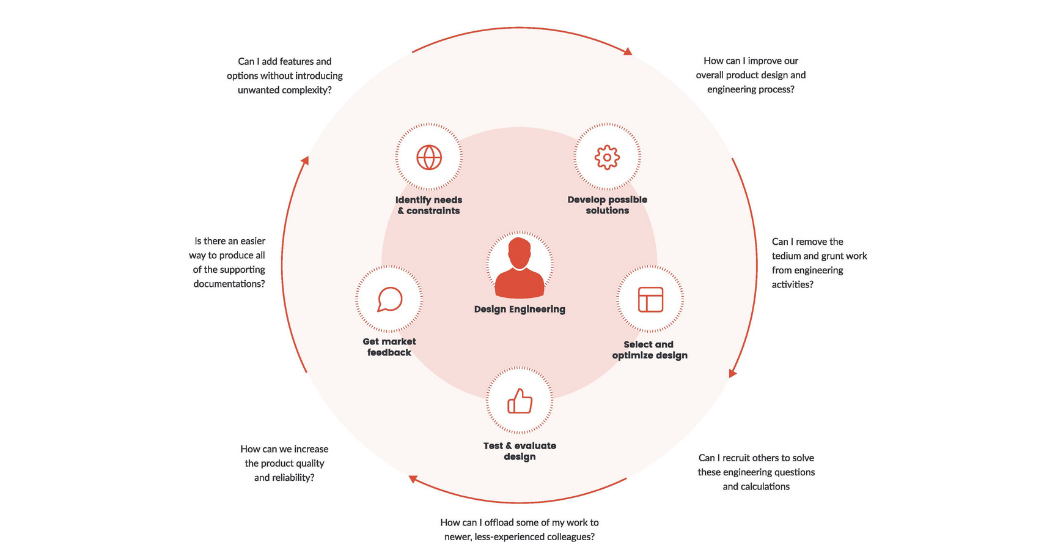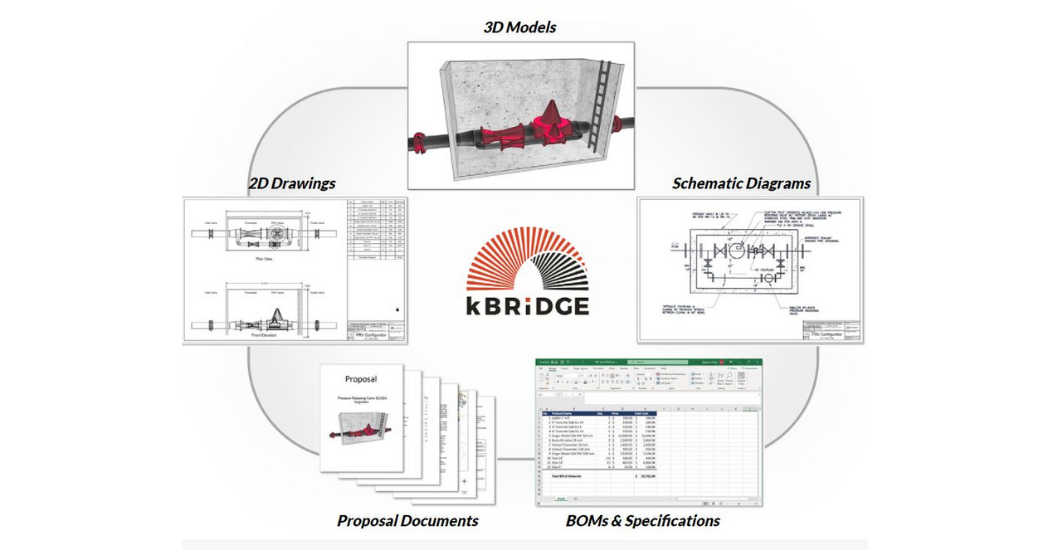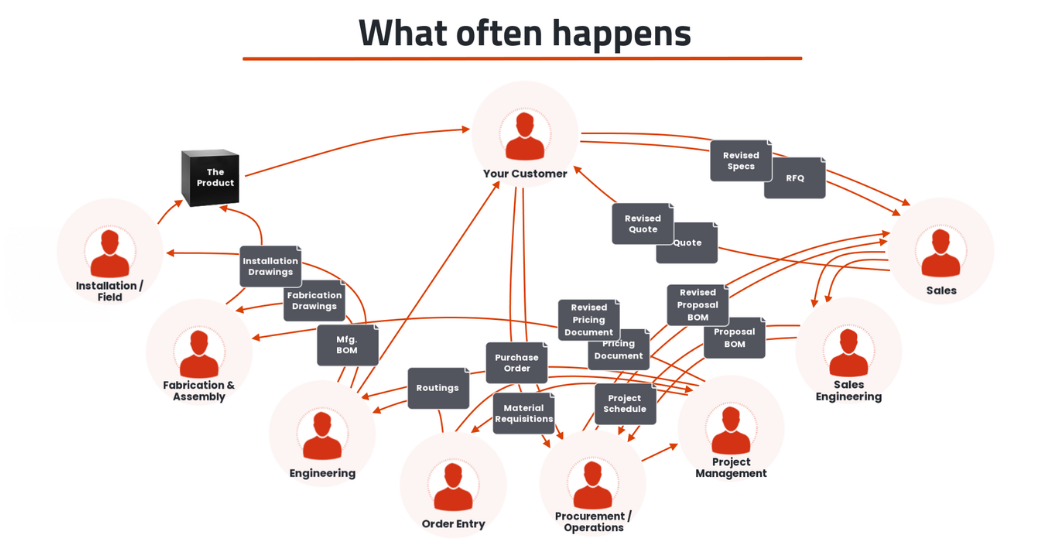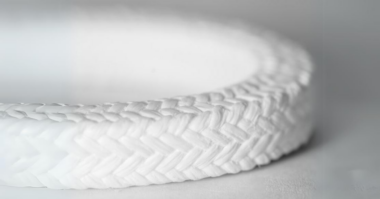The design, configuration, and production of customized pumps for specialty applications are quickly becoming the norm. With infrastructure funding likely, the demand will only increase over the next 24 months.
While that undoubtedly sounds encouraging for the pump market, few tools offer ways to combine proprietary design, industry-standard compliance, and automated configuration. Engineers must ensure that the final product will behave as expected under varying conditions including field conditions, input flows, pressure, temperature, and physical loadings.
 Scott Heide, of Engineering Intent, suggested, “Automation of this type must also include overall system configuration, helping to ensure that a given customized pump will truly be a solution to the engineering needs.”
Scott Heide, of Engineering Intent, suggested, “Automation of this type must also include overall system configuration, helping to ensure that a given customized pump will truly be a solution to the engineering needs.”
Heide pointed out that the configuration cycle of customized pumps involves a deep dive into fluid dynamics and structural analysis. Plus, there are many decisions to be made around materials, selection of key subcomponents, and consideration of manufacturing process alternatives. Functional design of a configured pump version (including pump elements, metering and control elements, shaft bearings and seals, and more) must support the overall design. Experience and technical knowledge are required to efficiently navigate this complex process.
To provide a platform to automate configuration of complexly engineered products, Heide’s company developed Knowledge Bridge (kBridge) software. It provides tools that capture the engineering required for valid configurations of a given design, and then automatically apply that knowledge to a new configuration. Once captured in the computer, this knowledge streamlines the tuning of pre-existing designs to customer specifications. The software automates project-specific engineering without demanding hours of manual engineering for each new variant.
Heide noted, “For engineer-to-order pump products, a great deal of the engineering design work has previously been completed and design elements verified. But there remains a critical need to lock down new configurations and dovetail them into an OEM system design. This process can range from something small, like the appropriate electrical connector for an ETO electric drive pump, to major sweeping engineering work around fluid chemistry, total head, discharge pressure, fluid density, and internal friction.”
Heide referenced that confirming that a design meets all engineering requirements is essential. Such verification blends design, configuration and analysis to achieve both optimum accuracy and performance, not to mention effective cost engineering. Other considerations include the entire system lifecycle from simple procurement of components, to the design and fabrication of custom fittings. These variables are many and may involve inventory management, product improvement, value engineering, and the management of obsolescence.

The answers to key questions at each step of custom sales point the way to fast, effective custom engineered-to-order sales.
System level configuration
Well generating of a newly configured pump product, ETO systems configuration depends on fully functional marriages of multiple products that work together. System configuration is a magnitude more complex than engineer-to-order product configuration because the interdependencies have a way of growing exponentially.
Heide explained that only with system level configuration can pumps be enabled with system functionality, that is, with optimal combinations of components that answer a given engineering objective. He said, “Only when engineers understand how the elements are connected can successful system design occur.”
System level configuration can be iterative – as the system is configured, new component variants might be needed for overall efficacy. Everything is both independent and interdependent, juggling how the interposition of a valve might affect the flow rate in a pipe system, or how cavitation can be eliminated from a given piping run, even how the internal surfaces and radius of an elbow can defeat turbulence. The system must be designed for functionality that is enabled not by a single configured component but by the combination of components, and the whole combination must satisfy engineering constraints.
System configuration, in other words, must automate the complex configuration, geometric, and engineering rules that uniquely apply when multiple products must contribute to a functioning whole.
Engineering, performance, 3D spatial arrangement, and visuals
The best configuration and engineering tools build models that slot into a topology, a carefully engineered hierarchy of design in which components are interrelated and arranged. This enables the technology to generate topological visuals: schematic diagrams, process flow diagrams, electrical 1-line drawings, and P&ID drawings.
The ability to visualize component placement in 3D is revolutionary because it reflects complex relationships between components, as when thermal or electrical behaviors, accessibility, weight distribution, or available space affect system conceptualization.
Identifying well-suited solutions to accomplish system level configuration
In the final analysis, engineering configuration and sales automation technology must model and configure functional elements using well-proven configuration rules. The solution must be based on declarative rules, rules that build each new configuration from the bottom up, not assembled from frozen choices, but rather from validly-engineered components generated on the fly.
The point is worth emphasizing: the solution cannot be based on a frozen master model. It must have the flexibility and power to generatively configure components that are networked together in new and unique ways each time.
Greatly helping this are visual configuration capabilities, enabling users to arrange components easily, whether in 2D schematic mode, or in 3D space. The final outputs, automatically-generated drawing sheet and document outputs are important for capturing a given as-built design for future maintenance. This aspect is especially important in regulated industries and in building and construction. It is important for renderings for approval drawings or other sales requirements.
Without these elements – automated design engineering, a solid marriage of all system elements, visual configuration, graphic outputs – custom pumps will struggle to meet the system level configuration objectives required particularly as infrastructure projects take off in 2022 – 2025.

Functional outputs are a major element required for effective engineering and sales automation.
Author Profile:
 Thomas R. Cutler is the President and CEO of Fort Lauderdale, Florida-based, TR Cutler, Inc., celebrating its 23 rd year. Cutler is the founder of the Manufacturing Media Consortium including more than 8000 journalists, editors, and economists writing about trends in manufacturing, industry, material handling, and process improvement. TR Cutler, Inc. recently launched three new divisions focusing on Gen Z, the African manufacturing sector, and manufacturing in the entertainment sector. Cutler authors more than 1000 feature articles annually regarding the manufacturing sector. Nearly 5000 industry leaders follow Cutler on Twitter daily at @ThomasRCutler. Contact Cutler at trcutler@trcutlerinc.com.
Thomas R. Cutler is the President and CEO of Fort Lauderdale, Florida-based, TR Cutler, Inc., celebrating its 23 rd year. Cutler is the founder of the Manufacturing Media Consortium including more than 8000 journalists, editors, and economists writing about trends in manufacturing, industry, material handling, and process improvement. TR Cutler, Inc. recently launched three new divisions focusing on Gen Z, the African manufacturing sector, and manufacturing in the entertainment sector. Cutler authors more than 1000 feature articles annually regarding the manufacturing sector. Nearly 5000 industry leaders follow Cutler on Twitter daily at @ThomasRCutler. Contact Cutler at trcutler@trcutlerinc.com.





Comments